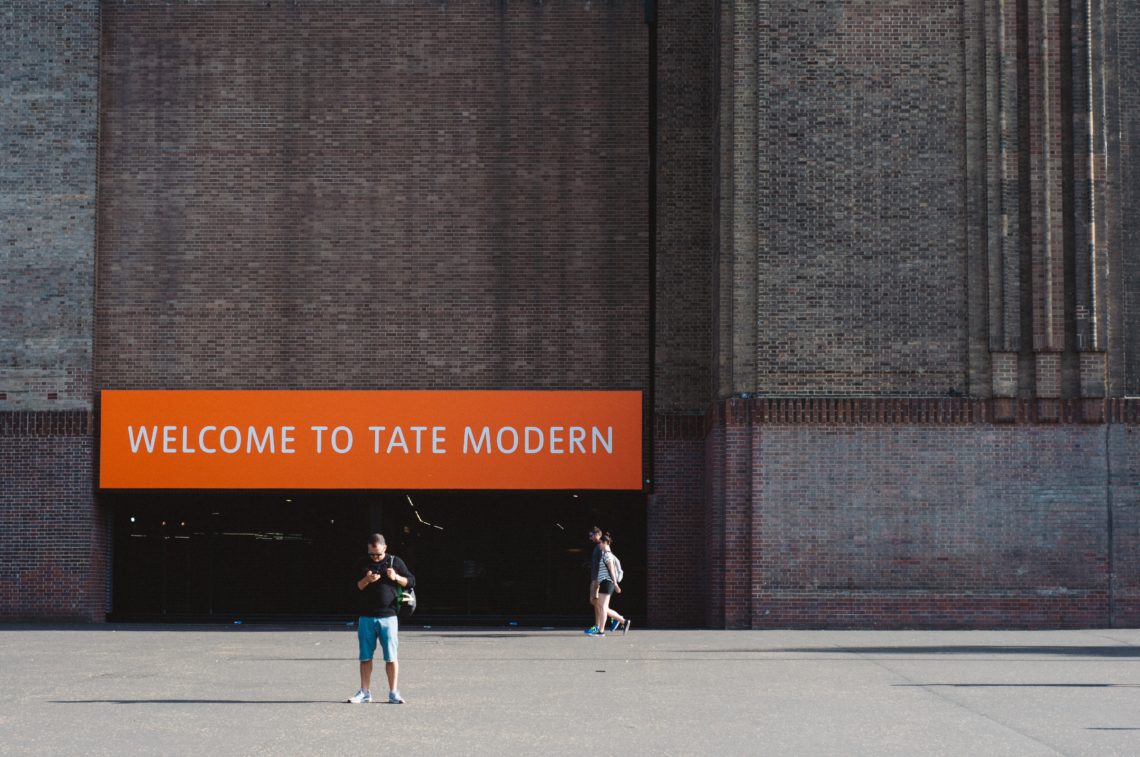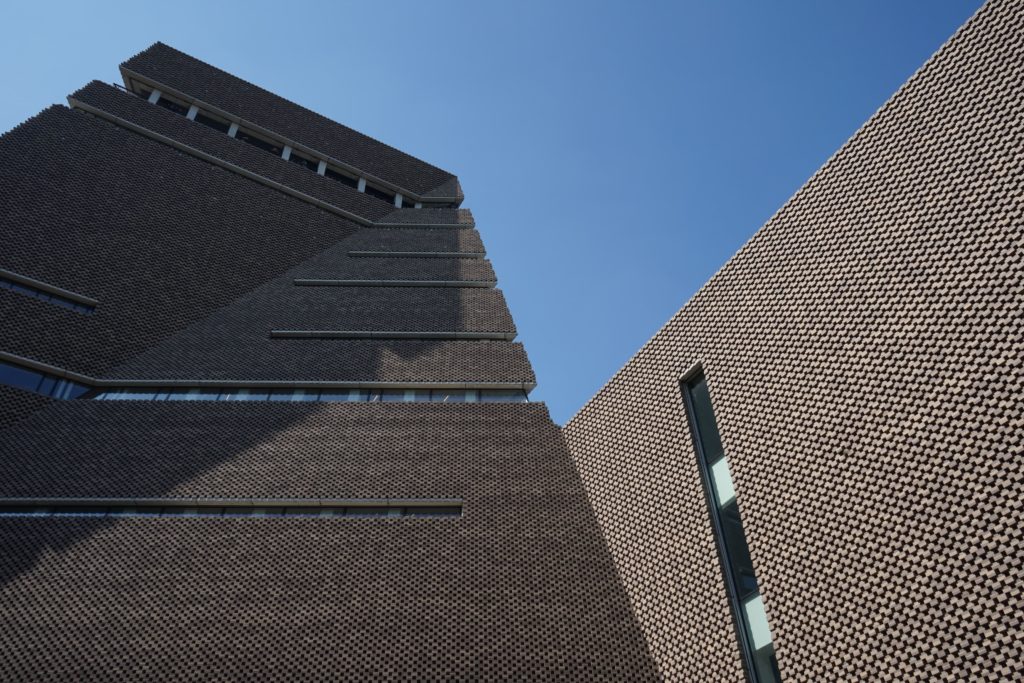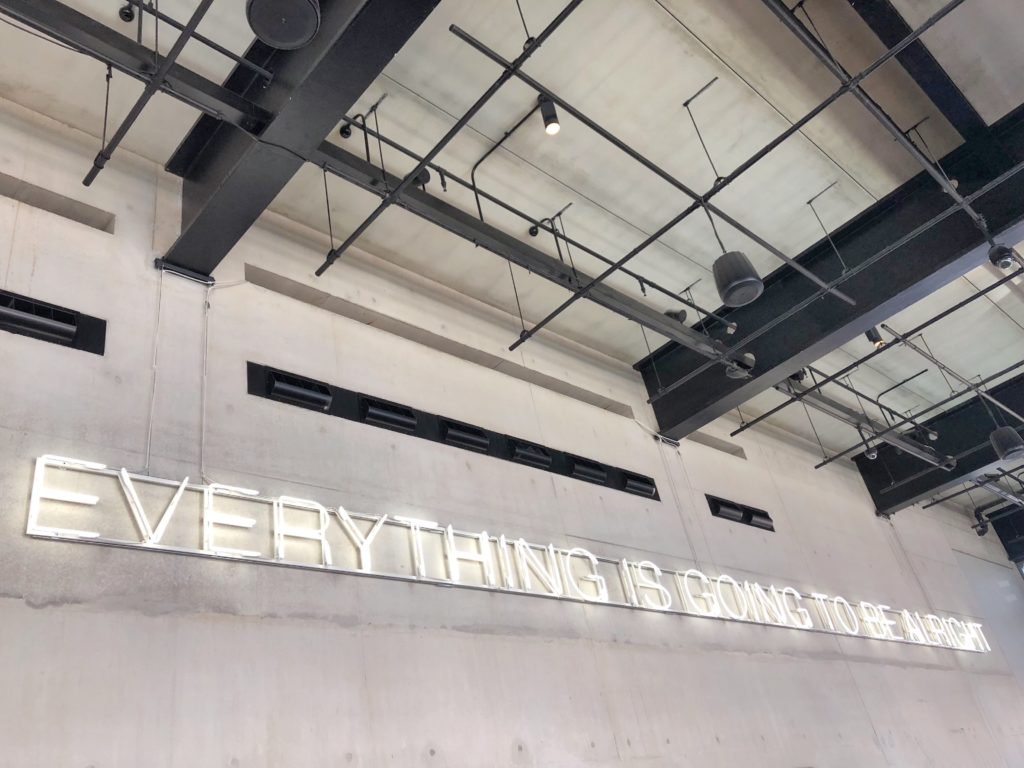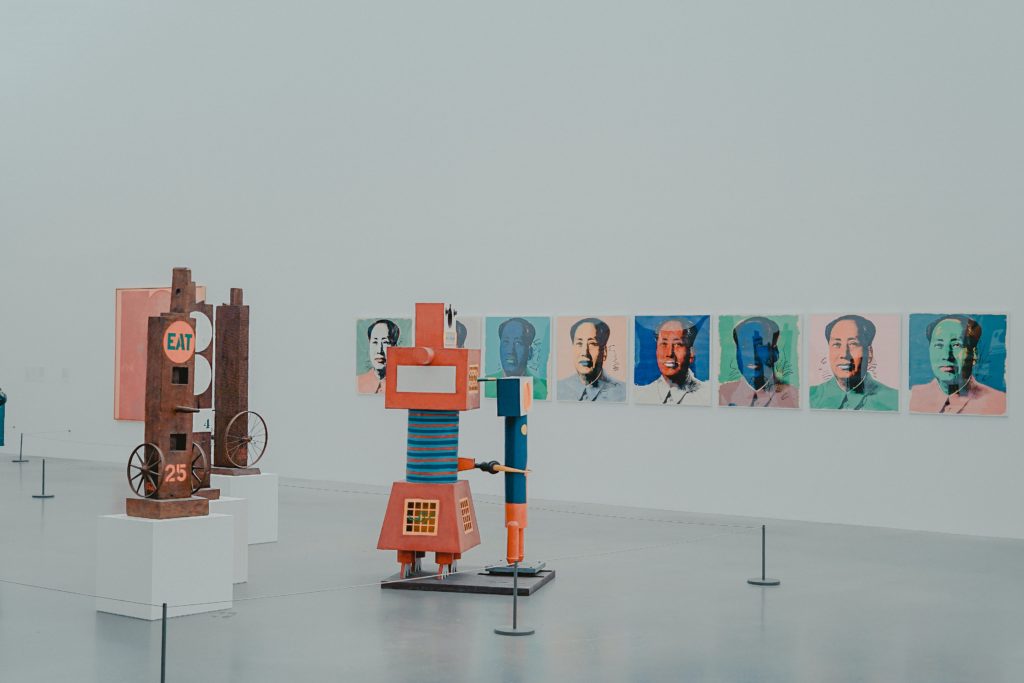
Keeping London contemporary – celebrating 20 years of the Tate Modern
The Tate Modern has closed its doors for the foreseeable future. But like the cyclical nature of art itself, it will be back.
Until that time, we thought it was only fitting to mark the Tate Modern’s 20th birthday with a look back at its fascinating history.
Welcoming 5 million visitors every year, Tate modern has become the world’s most popular museum of modern and contemporary art. It’s a venue for art on an industrial scale, in a city that can’t get enough of the concept.
But it wasn’t always this way.
Britain’s changing attitudes towards modern art
Before Tate Modern opened its doors in 2000, the Tate Gallery was one of the only places in London to showcase contemporary art. The collection was uneven and awkwardly separated its pieces of “British art” and “modern foreign paintings”. Worse still, it’s decision to invest in contemporary art was often ridiculed.
“Tate drops a costly brick,” read a Sunday Times headline back in 1976.
Mocking the Tate Gallery’s decision to purchase Carl Andre’s minimalist sculpture Equivalent VII, a piece consisting of 120 bricks placed in a rectangular pattern on the floor, this headline reflected Britain’s attitudes towards contemporary art. Simply put, it was a waste of taxpayer’s money.
When it came to modern art, London just wasn’t on the map. The capital didn’t have anything like Paris’ Pompidou Centre which opened in 1977. We were falling behind.
However, times and tastes changed. In fact, last year it was reported the Tate Modern actually attracted more visitors than the British Museum. Even more impressive considering that it’s the first attraction in 10 years to do so. So, how did we get here?
Birth of the Tate Modern
It’s often believed that London’s taste for modern art began to develop in the 1980s. In 1986, Joseph Beuys, Henry Moore and Andy Warhol all passed away and became immortalised as masters. Two years later, Damien Hirst would organise Freeze, a modern art exhibition at the old Port of London Authority building. And for a whole new generation of artists and art enthusiasts, this moment changed everything.
One person that took notice was Sir Nicholas Serota. The current Chair of Arts Council England and former Tate Director had a bold idea to mark the millennium. He wanted to create the museum of modern art for London.
And he wasn’t alone; it had also been the ambition of the Tate organisation for over 10 years. Crucially, they were running out of space in their London gallery on Milbank. And up until then, British art from the past 400 years and contemporary modern art sat next to each other like uncomfortable bedfellows. To make matters worse, only 10% of the collection was on display. Many masterpieces were left hidden away in storage.
Why Bankside?

Surely an old, disused power station in a derelict part of London was a strange choice for this museum of modern art? Well, not necessarily.
“It occurred to me that if I was in Frankfurt or Cologne and saw this building and was told that it was being converted to be a museum of modern art, I wouldn’t be at all surprised,” said Serota when he was considering the building.
Because if London was truly going to be at the forefront of an art revolution, it needed to defy convention – not follow it. The choice of Bankside Power Station harked back to Hirst’s decision to host Freeze in those baron Surrey Docklands. It marked the dawn of a new era.
“The transition from power station and coal stacks to vast spaces filled with modern art seemed to symbolise a coming of age for Britain, for London, and for culture, from which so much other social and physical regeneration and development has flowed,” said Jon Snow, former trustee and chair of the Tate Members Council.
But this museum of modern art wouldn’t just be a showcase for Britain; it was competing against the world. Serota understood all too well that Tate Modern would be compared to the new Guggenheim in Bilbao or the Getty in Los Angeles. However, the difference with these museums was that those architects designed with a blank slate.
Janet De Botton, Art Collector and Tate Trustee, defended the decision: “Had we done a building from scratch, the size of that building would have been something like a quarter of the space capabilities of this building,” she said.
Nevertheless, the Tate’s decision to convert an existing building came as a complete surprise to the architectural world. And their choice of architects was even more surprising.
Putting new power into old designs

When Tate had decided on the building, they ran a competition to find an architect. Serota was less interested in big names but in a vision that would work inside Bankside.
Surprisingly, Jacques Herzog and his partners at Herzog & De Meuron were the winners. In his mid-forties at the time, he was far younger than his competitors. Not only that, he was much less experienced and had never taken on a project of this scale. Herzog was generally known for designing much smaller buildings. His portfolio included a signal box, herbal suite factory, an artist’s workshop and an apartment house. So, why did they pick him?
Sir Nicholas Serota, Director of Tate Gallery explained the rationale: “The whole idea of choosing an architect who was in mid career and his mid-forties was that we wouldn’t get solutions that have been implemented in other buildings and be applied to the Tate.”
And they had some interesting ideas too. The most notable one was to preserve the grand Turbine Hall for installations. Essentially, Herzog wanted to keep as much of the original fabric as possible to create a tension between the building’s history and it’s new elements.
In many ways, it was a tension that had been brewing for over thirty years.
Before the power station was built, Bankside was actually a neglected part of London. Opened by the Queen in 1962, it was seen as somewhat unorthodox to have a power station in the heart of a city.
Arguably, the old power station at Bankside has always had artistic roots. Its architect, Giles Gilbert Scott, believed that industrial buildings should still have decorative elements. And this was present in Bankside’s criss-cross roof lights and tall cathedral-style windows. Not to mention the fact that it sat next to the historic Globe Theatre. Like its theatrical neighbour, it was destined to become one of London’s great storytellers.
Telling untold stories through art

Up until this point, modern art was traditionally arranged by date, nationality or movement. But Tate Modern defied convention. The curators had a brave idea of displaying pieces by type and theme – unheard of at the time. What’s more, each of the four galleries told a story through art:
- The body: this exhibit dealt with what happens to the human body in art and society. It was about the human figure and mind, as well as the present and absent body.
- Objects and still life: this area focused on objects in the real world. e.g. still life. It dealt with the domestic realm and how we interact with vessels.
- Landscape and matter: this level looked at the environment. It was about the landscape that we see and threaten – and how it threatens us.
- History, politics and ideology: the final area covered gender, race and class. It told both global and local stories, focusing on memories and society.
However, with works from both ends of the 20th century sat side-by-side, Tate Modern did much more than just change the way galleries exhibited art.
“…Tate Modern’s thematic displays not only revolutionised how museums tell — or don’t — the history of art; they also promoted a reversal of power between artist and curator. Chronological arrangements more or less protect art from curatorial interference. Thematic ones put a curator’s theoretical agenda first, prejudging and predetermining our responses, and selecting work by content or ideology rather than quality,” said Jackie Wullschlager, Art Critic for the Financial Times.
Their trailblazing choices in curation weren’t popular with everyone.
“Chronology is not a tool of art-historical interpretation which can be used at one moment, discarded at another,” said art critic David Sylvester in response to Tate Modern’s first hang.
But Tate remained defiant. The organisation was disinterested in following convention. In fact, they felt it had to be dismantled in order to tell a more nuanced, global story. This was a story that reflected Britain’s modern, multicultural society.
And for Tate Modern, those spaces between the pieces were just as important as the work itself. In fact, some rooms only had a few pieces of art when they could actually house a dozen or more.
One of the Tate Modern’s earliest supporters was art collector Janet De Botton: “The more the space is opened up and people can see things the way they should be seen, the more enthusiastic they are,” she said.
Modern art doesn’t stand still and if Tate Modern was going to keep its visitors enthusiastic and engaged, it had to evolve.
The changing face of Tate Modern
As society changed, so too has contemporary art. Consequently, Tate needed to look for new ways to showcase their collections and, crucially, demonstrate more artistic diversity.
To do so, they needed more space – a lot more. That’s why Serota made the decision to extend the gallery with the Switch House in 2016.
The change was astronomical. Adding 60% to the existing museum, 300 artists from over 50 countries were presented. The countries finding representation included Africa, the Middle East, Asia, South America, and Eastern Europe. Importantly, more women were being represented than ever before. It was a “genuinely new Tate Modern” with a more “international, diverse and engaging” collection, said Serota.
It wasn’t just the collections themselves that had changed; the Switch House offered a much more interactive experience for visitors. Essentially, it became part of the story.
“As onlookers, we invent our own narratives, take our own soundings and find our own sightlines. Variety is key – the museum must cater for all kinds of audiences and readings. In the Switch House, the building is as much a player as the art,” said Guardian journalist Adrian Searle.
But for Serota, the relationship between art, museum and visitor is symbiotic. “The real story is not the building but the different kinds of experiences of art that we will create. You’re no longer simply walking through a gallery looking at static objects. Your whole body is engaged in the experience,” he said before the Switch House opened to the public.
Seeing London’s skyline from the Switch House’s panoramic roof terrace tells an even bigger story.
Tate Modern’s impact on London

Since the Tate Modern opened in 2000, the landscape around it has changed dramatically. And what was once a sparse, post-industrial landscape is now prime real estate. Without question, the gallery has played a key part in regenerating the area.
But Tate Modern has always remained true to its roots. For example, the Switch House was actually designed by original architects Herzog & De Meuron to ensure its aesthetics stayed consistent. And in times of rapid gentrification and with ever-changing trends in art and design, this is something that Edwin Heathcote, architecture and design critic at the Financial Times, feels is important:
“London is increasingly becoming a city of corporate banality in which entire new quarters of steel, glass, and grass are emerging, seemingly disassociated from their sites and the city’s grain, ground, and history. Tate Modern avoids this neutered domain of white walls and glass by revelling in its scars, in the traces of history and industry, machinery and power. It is determinedly not a white cube and its galleries are not squeezed into awkward shapes to accommodate a sculptural icon,” he said.
This innovative space was so successful at enticing audiences into the world of contemporary art that it forced other London galleries to take notice. Even much more traditional museums were including contemporary pieces; the National Gallery actually found themselves hanging a self-portrait of George Shaw urinating against a tree.
The impact of Tate Modern, this rebellious spirit of artistic exhibition, has spread far further than our nation’s capital.
“It has trailblazed a paradigm that all the other great modern and contemporary museums that predated it, such as MoMA and the Centre Pompidou (and whose collections formerly certainly surpassed it), have now followed – that an account of modern and contemporary art must be truly global, inquisitive, and inclusive; it must cut across mediums and look beyond the Western canon,” said Nicholas Cullinan, Former Tate Curator and Director of the National Portrait Gallery, London.
In an interview with The Guardian, Sir Nicholas Serato was asked why he had dedicated so many years to the Tate. The question was especially interesting considering his opposite number at New York’s Museum of Modern Art was paid $2.1m in 2013 (Serota was on £178,000 when he left Tate in 2017).
“I am not an incredible patriot, but somehow working here means more than doing it somewhere like Chicago. Making a great museum in Chicago is an academic exercise. Doing it in London is about changing society,” he said.
When it comes to changing attitudes towards modern art, he unquestionably succeeded.
Key facts about Tate Modern:
- Bankside is 500ft long, with Turbine Hall soaring 100ft in the air
- The original project cost £134 million, with £50 million coming from the National Lottery
- Henry Tate was a 19th Century sugar merchant from Liverpool who donated his collection of contemporary paintings along with £80,000 to the government
- He also introduced Tate & Lyle sugar cubes to the United Kingdom
- Tate Modern is one of four other galleries around the UK in the Tate family. There’s also Tate Britain (formerly the National Gallery of British Art), Tate Liverpool and Tate St Ives in Cornwall
- There’s a time capsule buried in the foundations to give the building “good karma”. Items include a fountain pen and a piece of Swiss mountain crystal
- The architect of the power station, Giles Gilbert Scott, also designed Britain’s iconic red telephone boxes
What to look for in the Tate Modern when it reopens

There’s so much to see in the Tate Modern that it can be hard to take it all in. Here are our five must-sees for when this iconic museum reopens its doors.
#1. Nude Woman With Necklace (1968) by Pablo Picasso
This depiction of his second wife, Jacqueline Roque, is one of Picasso’s most famous works. He’d rework the theme of the female nude many times throughout his career – but this one’s iconic.
#2. Marilyn Diptych (1962) by Andy Warhol
If you’re a fan of pop art, this one’s a must. One of Warhol’s most notable works, the silk screen piece was completed during the weeks after Marilyn Monroe’s death in August 1962. The fifty images of the actress are all based on a single publicity photograph from the film Niagara (1953).
#3. Lightning with Stag in its Glare (1958-1985) by Joseph Beuys
Looking for something a little different? This is it. Heralded as one of Beuys’ most theatrical installations, it absolutely takes over the room. Enter inside and you’ll feel its presence.
#4. Seagram Murals (1950s) by Mark Rothko
Michelangelo’s Laurentian Library in Florence influenced these moody meditations. Rothko was originally commissioned to create murals for the trendy Four Seasons Restaurant. However, his work took a much darker turn.
#5. Mountain Lake (1938) by Salvador Dalí
Finally, no trip would be complete without a visit to see the work of this great surrealist. According to Tate, Mountain Lake demonstrates Dalí’s use of the multiple image; the lake can simultaneously be seen as a fish. And in doubling this image, he challenged rationality.
Know someone that’s interested in art?
From art classes to a private tour of the Tate Gallery, we’ve got lots of artistic gifts that you can buy now and redeem later. So why not give them something to look forward to with Red Letter Days?
Sources
https://www.youtube.com/watch?v=v9O2_52S0LY&t=56s
https://www.youtube.com/watch?v=E3EkNuryISI
https://www.youtube.com/watch?v=2piCEt-Bm-c
https://londontopia.net/culture/art/top-10-london-top-ten-things-to-see-in-the-tate-modern-art-museum/
https://theculturetrip.com/europe/united-kingdom/england/london/articles/10-unmissable-works-at-the-tate-modern/
https://www.guidelondon.org.uk/blog/museums-galleries/top-10-facts-tate-modern/
https://londonist.com/london/art-and-photography/tate-is-closing-its-galleries-due-to-coronavirus
https://www.ft.com/content/8c961a2c-2192-11e6-9d4d-c11776a5124d
https://www.theguardian.com/artanddesign/2017/jun/22/how-nicholas-serota-tate-changed-britain
https://www.apollo-magazine.com/how-tate-modern-transformed-london-and-beyond/
https://i-d.vice.com/en_uk/article/nen8jd/how-the-tate-modern-changed-art-in-britain
http://www.socialvisiononline.com/articles/content/2016/6/16/the-tate-modern-extension-its-impact-on-gender-and-diversity
https://www.theguardian.com/artanddesign/2016/jun/14/tate-modern-switch-house-review-brain-fizzing-art-pyramid
https://www.artsprofessional.co.uk/news/tate-modern-becomes-most-visited-attraction-uk
https://londontopia.net/culture/art/top-10-london-top-ten-things-to-see-in-the-tate-modern-art-museum/
https://www.41hotel.com/blog/inside-the-tate-modern-ten-things-to-see
https://londonist.com/london/art-and-photography/what-to-see-in-an-hour-at-tate-modern
https://www.theguardian.com/artanddesign/2013/jun/11/richard-wentworth-sculptor-portrait-artist
https://www.tate.org.uk/art/artworks/dali-mountain-lake-t01979




